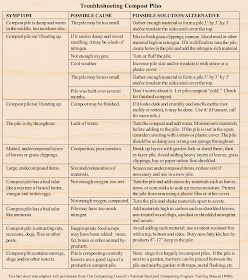Friday, 6 June 2014
Wednesday, 4 June 2014
Growing Lemon Trees
By Rifat Abro
The Dawn
A LEMON tree is a sub-tropical plant, and in its natural habitat, its fruit is green and only slightly acidic for the fruit to develop its flavour and yellow color.
The fruit is picked before maturity to preserve its acidity. Most of the species under the genus lemon are native to tropical and sub–tropical regions of southeast Asia, particularly, India, China.
Lemon juice is valued in the home as a stain remover, and a slice of lemon dipped in salt can be used to clean copper-bottomed cooking pots. Lemon juice has been used for bleaching freckles and facial cleansing creams. Lemon peel oil is much used in furniture polishes, detergents, soaps, and shampoos.
This citrus fruit ranks very high in its medicinal value, having many therapeutical uses. Lemon juice is a natural antiseptic which may be safely applied directly to cuts, bruises and infections. Lemon juice is good for asthma, headaches, pneumonia, and arthritis. It is a good general blood and body purifier and a mild diuretic. It is important in perfume blending and especially in colognes.
Lemon is grown in both dry and humid atmospheres, the latter being a disadvantage mainly in the processes of curing and storing. The lemon tree has the reputation of tolerating very infertile, very poor soil.
Recommended soils are sand, clay and sandy–clay–deep, with high permeability and good drainage. Black soils are also suitable if not lying over calcareous sub-soil. Ph should be between 5.5 and 6.5. If acidity is high, it is necessary to apply lime to achieve the optimum level.
Usually, lemon is planted in pits of 50 x 50 x 50cm or of 75 x 75 x 75cm sizes in square system with spacing of 5 to 8 m depending upon the species and rootstocks. For rough lemons or karana khatta wider spacing of 5 x 5 m is adequate.
Though the planting is usually done during the monsoon season, it is better not to plant at the time of heavy rains to avoid any water logging near the planting pits. Weather should not be too wet or too dry at the time of planting.
The rough lemon is widely grown from seed. The ‘Meyer’ lemon is easily reproduced by rooting large cuttings in the nursery and planting them directly in the grove. They fruit two to three years sooner than budded trees and have a long life, remaining in full production for over 30 years, perhaps much longer. In case of lemons, cutting and layering (air layering) are commonly employed and plants thus raised develop shallow but good root system.
Remove congested growth in early spring, and pinch out shoot growing tips in summer. If renovation is required prune back by two-thirds in early spring. Pruning lemon trees should be confined to trimming extremely long branches that become untidy or new branches that cross over others, they do not require any special pruning to encourage flowers as these will be produced naturally shoot tips and wood old enough to bear them.
Irrigation is of vital importance to lemon orchard and it is considered as one of the most critical culture operations. About the method of irrigation, suggested that young trees up to eight years may be profitably irrigated by basin system. Other irrigation methods applied are flood, furrow, sprinkler methods.
The application of irrigation in right time and in right quantity is more important than the method of irrigation. Usually, under local condition weekly irrigation during March to June and fortnightly irrigation during November to February are practiced.
For sustained production and to maintain proper orchard health it is essential to apply manures and fertilisers to lemon orchard regularly. For non–bearing tree, fertiliser application may be done in an area more than drip circle, leaving 15 -30 cm radius around the tree trunk.
The marketability of lemons depends on the stage at which they are picked. Lemons were allowed to remain on the trees until they became too large. It was realised that early picking is necessary.
Some growers adopted the practices of picking at any time after the fruits reach 25 per cent juice content, and using rings to gauge the commercially acceptable size, and repeated spot-picking with clippers. Mechanical picking is impossible with lemons. The fruits are highly prone to oil spotting (oleocellosis) and cannot handle roughly nor picked wet.
In Pakistan, a 6-year-old tree bore 966 fruits and at 9 years of age, had produced a total of 3,173 fruits.



